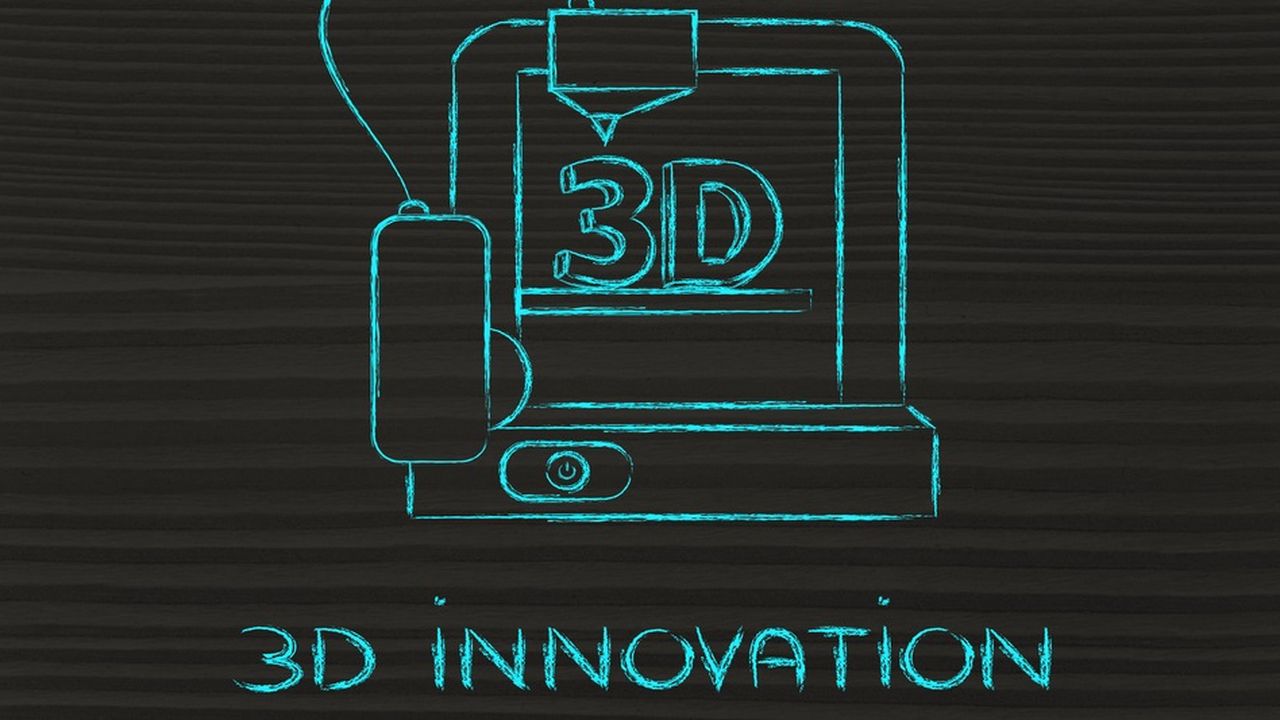
Tomorrow, all entrepreneurs thanks to 3D printing?
3D printing is getting a lot of attention, but beyond the innovations (medical prosthetics in particular) and tools, what impact can this technology have on the economy and businesses?
Thierry Reyna*: 3D printing today generates the same doubts, the same criticisms and the same potential for innovation as 2D printing did at its birth. Today, it has become very expensive, and many do not see how it can be useful, but all this is changing very quickly. 3D printing costs are divided into 10 years and 5 years. Patents for professional 3D printers will enter public ownership within one to two years. We will then go much further than this “tool” vision that small 3D printers sometimes promise. Laser or jet materials technologies will provide unrivaled qualities. The same level, for example, as the 3D technologies used by Airbus today. The problem is that information about these new uses in France has not yet reached small businesses. But it is clear that we are in a phase of digital transformation and the business opportunities already exist.
What are these opportunities for startups and companies?
First of all, 3D printing allows for rapid prototyping. Every company that makes products needs to make prototypes. And 3D printing makes it possible to do this quickly. Small businesses will thus be able to meet investors with something tangible to show them how to raise money. The same applies to convincing customers. The second advantage of 3D printing is fast tooling. Without producing everything in 3D, this technology makes it possible to produce injection molds with unparalleled savings in time and money. Let's take the example of a small plastic spoon. The mold costs €1,500 to produce and takes one month. With 3D printing, costs are cut in half and the process takes only 7 hours. A small company will not only be able to produce more easily, but will also be able to innovate and offer small series with multiple mold shapes.
What about producing things using this technology?
In fact, 3D printing makes it possible to produce things directly, which to me seems especially interesting for new entrepreneurs. This technique reverses the classic problem that creative people face. Today, they need to raise money to produce a prototype, to convince investors, and then for production itself. On the other hand, 3D printing generates positive cash flow. The designer can display a model on his website or on a specialized platform and begin production only after placing the order. There is no longer any minimum order that must be reached before you can get started. This production mode also allows production to be constantly improved through co-creation with customers. Once success is achieved, the entrepreneur can invest in his or her own 3D printer or mass produce it. The critical size and scale problem faced by SMEs is on the rise.
Some examples of 3D works
There are many business models inspired by 3D printing. This fits perfectly with the ethos of starting out and being self-employed. Today, most companies created on this model are the work of designers who offer original accessories, such as support for repairing your iPhone in Autolib. An American entrepreneur has had great success with a piece that allows a card reader to be connected to a laptop, which sold for $8 against a manufacturing cost of $1. Even more innovative is a New Zealand company that offers 3D-printed electric guitars, which are customized and then manufactured locally. In addition to transporting a number of products, 3D printing opens up great areas of innovation related to connected objects.
Is it really affordable for small businesses? They don't necessarily have the necessary skills internally to get started…
The potential of 3D printing is also underestimated due to the lack of knowledge and mastery of 3D creation software. But there are more and more sites that put precisely this type of skill at everyone's service. A French platform, Getmakers, offers to connect everyone who wants to produce with a community of makers who master 3D modeling. This kind of service will definitely remove obstacles.
But couldn't 3D technology isolate markets from startups, by allowing everyone, i.e. the popular producers/consumers, to produce themselves?
Of course, there will be hacking and theft of things… but that's the prerogative of any new digital technology. This technological revolution requires carefully reshaping business models to anticipate this new normal. Lego, for example, has realized that tomorrow it will not sell plastic bricks, but rather services and 3D printers for small bricks! Today we see open source objects emerging. From the product model, we move to the service model. The world of business and the world of manufacturers have not yet merged, but companies have everything to gain from staying open to these emerging uses. 3D printing opens new horizons of innovation to more people. Tomorrow, everyone will be able to become entrepreneurs!
*Terry Reyna is Professor of Economics at Novansia Business School and Imperial College London. Specialized in digital economy and 3D printing

“Organizer. Social media geek. General communicator. Bacon scholar. Proud pop culture trailblazer.”
